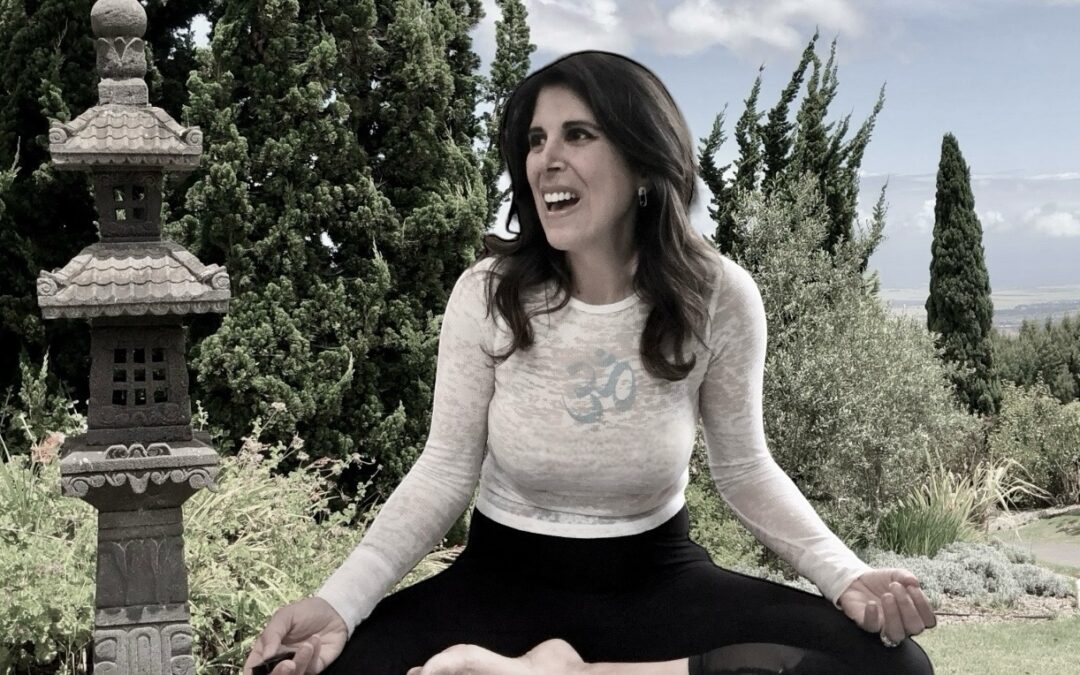The Most Asked Question
As a meditation teacher, I hear it a lot. Usually I’m the one asking. “Why can’t I meditate?” I ask me. Here’s an answer; because I am alive. Also because this feels unnatural. The good news is thinking while meditating is still meditating! Brains think, so most of us with brains find meditation challenging. Many more of us have never even tried it because it seems kind of absurd. The common myth is that it takes up precious time in our overfilled days to try to suppress our overworking minds and do nothing but struggle! Several non meditators have expressed to me that meditation looks like “pointless suffering.” I have news for them, it sometimes feels even worse than it looks! But it is quite the opposite of pointless suffering. It has a point, and that point is found in the “suffering.” In fact, meditation is what teaches us how to suffer less in life. The suffering, in meditation and in life, is based on resistance to what’s happening. In meditation, the suffering comes from the misconception that meditation is supposed to be an effortless stillness. When we resist having thoughts, that resistance feels highly effortful. This is because meditation is not about the effort of resisting thoughts. It is about the effortlessness of allowing stillness, or letting the stillness arise between all the distractions. This comes with practice. Meditation is not the absence of thoughts. It is simply a gentle training of our attention toward one thing. It can be done walking, lying down, listening to music, or really doing anything where our awareness or attention is focused on an anchor. Each time we get distracted, we notice it, and return to the anchor.
The Process
The anchor, or single focus, does not mean having no other thoughts or innately knowing how to enter a deep focused state. That would indeed seem difficult for any of us who are not silent monks living in the mountains. Meditation is simply this deliberate practicing of noticing what we’re noticing. It benefits all who practice, especially the most fidgety overthinkers like myself. For those of us who live amidst real life stressors like thoughts, emotions, other humans, and life’s expectations, then sitting still without our thoughts is indeed impossible. Fortunately, meditation does not require the absence of thoughts or actually any goal at all. Instead, it is based on the act of practicing. This is a big ask in a culture that often strives for an end game of perfection.
Meditation values process over outcome. It is about becoming the kind witness to your thoughts as they arise. Meditation is a practice to quiet the mind, not to suddenly enter a trance. In fact, to seasoned meditators, the “trance” is what is considered to be our warped perspective when we’re not present and connected to ourselves and others; a trance of separateness. When meditation becomes a regular practice, we learn how to move away from that separatist trance. We begin to know ourselves better, feel more compassionate and connected to others and nature, find a quieter mind, fewer thoughts, and even a calm mental state. These are natural consequences of regular meditation. This comes from practice. This is the gift behind the misconception of pointless suffering.
Curiosity
To meditate, we embrace curiosity, not judgement. We detach from outcome as best we can. We begin to observe the passing of our thoughts and emotions, so we are no longer trapped in the stories of the mind. We start to see that we are separate from the stories our minds create. We repeat this distancing process over and over. This is the practice. As we meditate, we intentionally train the brain to create a habit or reflex of a gentle single focus. The brain has the capacity to change in response to repeated experience. This ability is called neuroplasticity. The more we meditate, the more we are able to strengthen circuits in the brain to make meditation easier.
Witnessing Thoughts
In meditation we can choose an anchor, such as our breath, to be our single focus. Each time a thought arises, we can learn to release it and come back to the anchor. As we become more aware, we notice the thought arising, we can then name it, deeming it a “thought,” and releasing it. This is the ongoing process of quieting the mind, without judgement, with curiosity, and with compassion. Self compassion is an important quality of meditation. Go easy on yourself as you meditate, especially as you struggle to. The struggle is part of the process.
Remember; meditation is always a practice, and never a perfection. The most daunting meditation is often the first. The battle is to start. Once you’ve meditated even one time, you’ve begun the practice. You cannot fail at meditating. You can only fail to try.
Where To Begin
If you’re ready to start, try a meditation app like Insight Timer or Headspace or join me in this short video INTRO TO MEDITATION WITH BODY SCAN.


